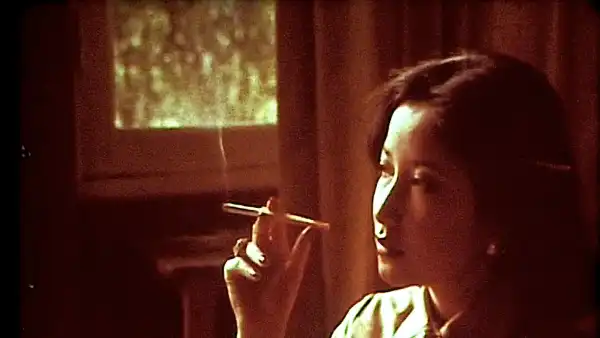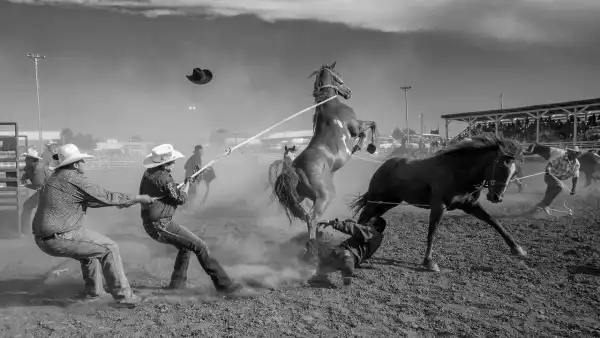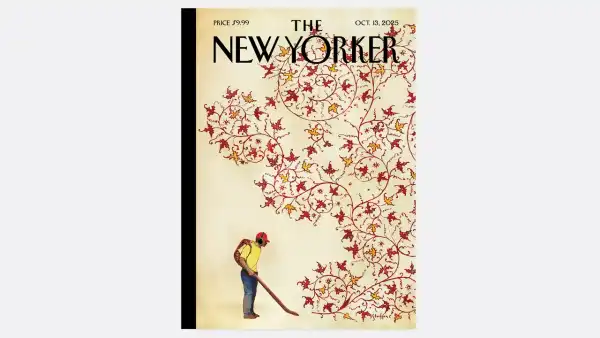
Save this storySave this storySave this storySave this story
Whenever I’m checking out the selections in the Revivals portion of the New York Film Festival—and, actually, any time I notice a remarkable retrospective heading to one of the city’s revival theaters—I consider these showings not as preserving cinema’s past but, rather, as sheltering its future. The crucial aspect of this art form’s background is its imaginative strength, its aptitude to invigorate filmmakers of subsequent eras and spark forthcoming movies. In that sense, one of the signal occurrences of this year’s festival is the global première of a revamped version of Mary Stephen’s picture “Ombres de Soie” (“Shades of Silk”), from 1978.
“Shades of Silk” marked Stephen’s initial feature, and it endures as a high point of structure, manner, and historical insight. In her mid-twenties at the time of the film’s creation, Stephen was born in Hong Kong to a Chinese household that immigrated to Montreal in 1967. She created a few brief films in Canada and then, in the mid-seventies, secured a grant to study cinema in Paris, where she made “Shades.” The film’s budget was minimal—shot in 16-mm., with a small group and Stephen herself enacting one of the leading characters. But the outcome couldn’t be more dissimilar to the well-known roughness of independent filmmaking. In a concise sixty-two minutes of elegantly winding visuals and enticing surfaces, it reveals a tale that traverses continents and decades.
The narrative centers on impossible love, focusing on two young Chinese women, inseparable high-school friends in Shanghai in the nineteen-twenties whose bond contains a potent erotic current that extends into adulthood. In 1934, Lysanne (played by Alexandria Brouwer) resides in Paris and corresponds with her friend Marlène (played by Stephen), who’s studying at Wellesley, urging her to relocate to a university in Paris. There are glimpses of their shared experiences, but Lysanne’s entreaties are futile. Overwhelmed by her longing for Marlène, she experiences a nervous breakdown, and departs to stay with her mother, now living in the colony of French Indochina. Once there, Lysanne weds a wealthy young man. Marlène receives an invitation to the wedding, attends, and projects a composed image for as long as she can, until the sociable facade collapses, with devastating results.
A key component of modern cinema is that, in contrast to so-called experimental filmmaking, it doesn’t reject stories but openly underscores the means by which stories are conveyed—often through a boldly indirect or remote connection between a narrative and the images and performances that evoke it. “Shades” commences with a quote from Marguerite Duras’s script for Alain Resnais’s “Hiroshima Mon Amour” (1959), and Duras progressively emerges as a presence overshadowing Stephen’s film. Although chiefly known as a novelist, Duras gained prominence as a filmmaker in the nineteen-seventies, and her 1975 film “India Song” offered Stephen her principal motivation for “Shades,” which is noticeably in conversation with the former picture. Shared elements involve a portrayal of romance in colonial backdrops, ballroom-dance sequences, and a storyline expressed largely in voice-over—including, in “Shades,” the letters exchanged by the women and an all-knowing narrator. Yet Stephen’s film, while seemingly partaking of Duras’s domain, also reinterprets that domain. Duras was born in French Indochina, close to what is now Ho Chi Minh City, in 1914, and spent a significant portion of her youth there, not moving to France permanently until 1933, to attend university. Stephen—unlike Duras, whose family was white and of French heritage—grew up perceiving the strains of colonialism from the opposite perspective, as an ethnically Chinese individual under British authority. In “Shades,” the unease, the sense of a home that’s merely provisional, indicates the societal and political burdens of residing in a land that both is and isn’t one’s own—of coping with cultural hierarchies both public and internalized and engaging in relationships (including romantic ones) with the colonizers.
Stephen elicits life among the colonized not solely in the film’s narrative but also in its style. The action is largely asynchronous, with events onscreen contrasting with the voice-over narrations, destabilizing the present moment of the film, endowing it with nostalgia and with longing for potential futures. Stephen depicts the women’s schooltime connection in mesmerizing flashbacks, and their separation mainly through absence itself, with gliding, thoughtful shots of locales—rooms, buildings, streets—where the women have been and may be again but which, onscreen, are unoccupied. Stephen, despite filming in Paris on a minimal budget, accomplishes an extraordinary evocation of Asia and the past. She even refracts the timeline of the narrative off the period in which she created the film: Lysanne’s wedding feast, depicted in dramatic snippets, is enhanced with a series of still images of a current banquet that visually echoes the one in the story while also extracting it from its fictional setting. There’s a sense of timelessness to “Shades”: it’s set in the mid-nineteen-thirties, it shows the twenties, it was produced in 1978; it resonates stylistically with various masterworks of its era yet is so reminiscent of the past and so aesthetically and thematically advanced that it appears to occupy a region outside chronology. It’s almost as though the film is somehow detached and distant from itself.
It’s fitting that Stephen, as a filmmaker of absences, has built a significant career as a film editor—notably, on the films of Éric Rohmer, with whom she collaborated briefly soon after crafting “Shades,” and then consistently from 1991 until his final film, in 2007. Editors serve as cinema’s subtractors, and they generate multiple forms of absence: certain eliminations merely remove, whereas others generate, organizing what’s present to evoke what’s not there all the more compellingly. With “Shades,” Stephen broadens and deepens the connection of drama and structure in ways that provide valuable insights to filmmakers today.
The screenings of “Shades” at the New York Film Festival occur simultaneously with a retrospective of Stephen’s oeuvre at Metrograph. Alongside “Shades” and a few of her short films, it encompasses her remarkable recent feature, “Palimpsest: The Story of a Name.” The film takes the form of a personal documentary, a quest to uncover how Stephen, in spite of her Chinese heritage, came to possess an English surname. It is centered on her deceased parents, Henry and Hilda Stephen, and charts the intricate journeys that distinguished their lives. They encountered each other in Hong Kong, but Henry wasn’t native to the area, and their peripatetic existence mirrored a period of political upheavals in Asia, including Japan’s military conquests of the nineteen-thirties and its occupation of Hong Kong during the Second World War. Stephen’s parents, who worked in business, seem to have inspired the filmmaker’s talents through their avocations: Hilda was a published poet, and Henry was an amateur filmmaker who left behind a large compendium of home movies and a remarkably expansive collection of autobiographical journals and family histories. Stephen’s narration here is as richly detailed and as startlingly imaginative and multifaceted as it is in “Shades of Silk,” while also witty and lively, conveying the warmth and occasional idiosyncrasy of family bonds along with the imaginative implications of family tales. I appreciate that “Palimpsest” is screening at Metrograph, but I wish it had been given the more prominent platform of the N.Y.F.F. I’ve viewed numerous commendable new films at the festival, and Stephen’s new one stands on equal footing with them.
Another N.Y.F.F. revival, “The Wife of Seisaku,” from 1965, passionately and intimately brings an important episode of history to life. The director is Yasuzô Masumura, several of whose films—including “Giants and Toys,” “Black Test Car,” and “Red Angel”—rank among the treasures of Japanese cinema. Masumura’s professional life was protracted and expansive, with approximately sixty features released between 1957 and his death, in 1986, at the age of sixty-two. Nevertheless, only a few of his films are accessible in the U.S., and the restoration of “The Wife of Seisaku” offers an exemplary introduction to his incisive work. It takes place in a secluded Japanese village around the time of the Russo-Japanese War of 1904-05. A woman named Okane (Ayako Wakao) returns to the village, having been the concubine of a prosperous businessman who died unexpectedly and left her a sizable inheritance. She takes up residence with her mother and accommodates her feckless brother but is scorned and excluded by the remainder of the village due to her past. Subsequently, a young man named Seisaku (Takahiro Tamura), who has been serving in the military, comes back to the village where his girlfriend, Oshina (Yuka Konno), awaits him. He arrives imbued with patriotic fervor, enthusiastically inciting martial pride among the villagers, but he displays little patience for their shunning of Okane. His empathy for her quickly transforms into affection, and he defies the community by marrying her. However, war erupts, and he’s drafted back into service. Okane is distraught at the prospect of losing both her true love and her solitary defender, and her despair gives rise to dramatic and harrowing events.
Masumura delivers a scathing critique of Japanese nationalism and militarism, satirizing their grandiosity and vanity and denouncing what he perceives as the restrictive moralism of his nation’s tradition-bound social structure. In this respect, his work parallels that of such veteran directors as Kenji Mizoguchi and Yasujiro Ozu. But Masumura’s approach is stark and severe, a cinematic equivalent to pulp fiction, featuring intense emotional and physical violence, forthright and fervent eroticism, frenzied performances, and garishly distorted visual arrangements. (His closest Hollywood counterpart might be Robert Aldrich, recognized for such vehement movies as “Kiss Me Deadly” and “What Ever Happened to Baby Jane?”) “The Wife of Seisaku” is filmed in black-and-white wide-screen format, and its asymmetrical visuals and contorting angles suit Masumura’s passionate, sardonic, yet fervently open-minded outlook, and his demystifying of the sanctimonious myths of history. ♦
Sourse: newyorker.com







